If you’re reading this blog post, you’re probably wondering, “What do you do if you’re in a creative rut or you’re experiencing art block?”
As well, you’re probably following up that question by asking, “How do you create art when you feel creatively blocked?”
Art block occurs when an artist feels incapable of creating art because they have difficulty tapping into their creativity.
Feeling art blocked can be described as any of the following: you lack motivation, you struggle to take creative action, perfectionism holds you back, you feel frustrated or stressed with your art, and you struggle to translate your ideas into artwork.
But why does art block happen to artists of all walks of life?
We’ll be exploring the answer in this blog post. As well, we’ll look at:
- Why art block is real and not a myth
- What causes people to fall into a creative rut
- 15 effective strategies to help you overcome art block and become creative again
By the time you’re done reading, you’ll feel inspired to implement several of these strategies so you can say goodbye to art block once and for all.
It’s time to reclaim your creativity and take back your creative power!
Table of Contents
Is Art Block Real?
Yes, it’s real.
Of course, how it manifests in an individual’s life will vary from person to person. Everyone is different, so there is no standard way to experience a creative rut.
Often enough, art block—also referred to as creative block—can be identified by the following:
- You’re struggling to produce creative work on a regular basis
- You’re lacking motivation to create something new
- You’re having a hard time translating your ideas into artworks
- You may have the desire or the inspiration to create, but you can’t seem to make yourself create anything, or
- The lack of desire or motivation demotivates you, so you don’t create anything at all
These are just a few examples. In reality, there could be many more reasons. But for the sake of brevity, I’ve mentioned some of the most common ones.
Art block can last one or two days, or it could last for weeks and sometimes even months!
Everyone’s experience is different, and it’s completely natural to fall into a creative rut sometimes. So don’t worry, you’re not alone!
What Causes Art Block?
Two of the most common causes of art block are mental and physical exhaustion.
You may be stressed from your job, so you come home feeling exhausted and uninspired. Perhaps a person or situation is making you feel anxious. Maybe you’ve got too much school work to juggle.
In addition, you may be putting too much pressure on yourself to create a masterpiece. Or you might be comparing your artwork to other creators online, which damages your self-esteem.
Raise your hand if you can relate!
Fortunately, studies have shown that creative activities including painting, drawing, and colouring, can positively impact your health in beneficial ways. For this reason, overcoming art block is very important.
Note: If you’re curious, click here to learn more about the positive benefits of art for mental health.
Now let’s move forward to discover 15 effective methods that will help you overcome your creative block.
How to Overcome Art Block?
1. Take A Break
The best advice for anyone who’s experiencing a creative block is to take a break! Simple, right?
Forcing yourself to engage in an activity that’s not bringing you joy or fulfillment isn’t doing you any good. So why not step away from art for a while?
During your break, you could pursue another hobby you enjoy, such as reading or music or yoga. Moreover, you could spend time with your family and friends by doing fun activities together.
Whatever you choose, make sure you’re engaging in some kind of activity that makes you feel happy. This brief pause will help recharge your creative batteries.
Just make sure your break isn’t too long. After all, you’re not taking a vacation! Make sure it’s enough time for you to realign yourself, but not so long that you fall into the habit of procrastinating.
So when your break is over, make sure you schedule time to make art so that you can start creating again.
2. Art Block Idea Generator
A quick and easy solution is to find an idea generator that can suggest themes, subjects, or situations for you to draw.
For example, Drawing Prompt generates random ideas and scenarios for you to recreate in your artwork. All you have to do is choose a category and see what pops up.
You might discover yourself creating artwork about things that you never would have previously explored.
Note: You could also consult a writer’s block idea generator because they work in a similar fashion. Artworks often tell a story, so if you’re curious, you can check out some websites to generate a plot or setting.
3. Find Drawing Prompts
If you’re having trouble coming up with drawing inspiration, find or make a list of drawing prompts.
You can find a list of prompts by doing a quick Google search, or you can ask your family and friends to give you ideas. Write them down, and every time you decide to make art, consult your list.
By having a list of drawing prompts already created, you’re less likely to experience decision fatigue because you already have your ideas. Here’s a list of ideas to get you started:
- A vase of flowers
- A cute cat or dog
- A figure study drawing
- A skyline or urban landscape
- A cartoon character
- Something in a glass bottle
- Candies and lollipops
- Detailed textures (fur, wood, etc.)
- Repeating patterns (dots, zigzags, etc.)
- Fruits and vegetables
Or, if you don’t have time or you’re too lazy to bother, you can grab my free list of 100 drawing prompts so that you can start drawing immediately!
This is an excellent way to overcome art block because your list of prompts can include things you’re already good at drawing as well as things you’ve never drawn.
Even if you struggle to draw the prompt, commit to drawing for at least 10 minutes every day. If you do, by the end of the week you’ll have committed 1 hour and 10 minutes to your artwork.
4. Do Many Studies of One Subject
This tip is similar to tip #3, but differs insofar that this time we’re going to pick one prompt and do many studies of that subject.
For example, let’s say you like drawing princesses.
You could draw a bunch of sketches of your favourite cartoon princesses by using reference pictures to help you.
Other interesting subjects include trees and flowers, animals, food, people, buildings, and cars.
Each time you draw the subject, you’ll get better at it. It will become easier to remember the correct anatomy. The facial proportions. The clothing folds.
By studying one thing thoroughly, you are learning how to master drawing that subject. As you progress, it becomes easier and easier to reproduce it.
Related: Make sure you check out this list of recommended drawing supplies for artists.
5. Make Pictures Out of Doodles
Start by drawing random lines and squiggles all over a page, and don’t worry about how messy or pretty they look.
To do this, loosen up and trust the process of creating intuitive art. That way, you can rely on your intuition to create freely.
Look at the lines and shapes. What do you see? This exercise is exactly like looking up at the clouds and creating unique things from those fluffy forms.
You can turn the shapes into anything you want: people, places, things, etc. Go crazy and have fun with this exercise.
You’ll soon discover that your mind can come up with some really interesting and bizarre interpretations of those simple little lines.
The best part is that you will have a page full of random ideas that you can use in a new artwork. Say goodbye to art block!
Note: You can also try this strategy with paint by practicing your watercolour technique, improving your acrylic paint pouring, etc.
6. Study Your Favourite Artists
Last but not least, you can study your favourite artists’ works in order to draw inspiration from the things that appeal to you.
Scroll through Instagram and Pinterest to study different styles. Save the pictures to use as reference, and make mental notes of the elements that you want to incorporate into your own unique art style.
If you have art books, flip through them and bookmark the pages that stand out to you. The point of this exercise is to become aware of the artistic elements or techniques that you are naturally drawn to.
By doing so, you’re likely to discover a bunch of new techniques or ideas that you want to experiment with in your own artwork.
Related: Check out this helpful guide on how to draw for beginners because it might inspire you to take creative action.
Make your works become stickers!
What can be more meaningful than making your works into exquisite custom stickers to stick anywhere or as a gift to others? To convey your artistic thoughts to people, custom stickers are a good promotional material in a relatively convenient and cheap way. Customsticker.com is the place to make your thoughts come true. The advanced and fast service allows you to create the most unique custom stickers at a low price with high quality. Use your imagination to create works right now!
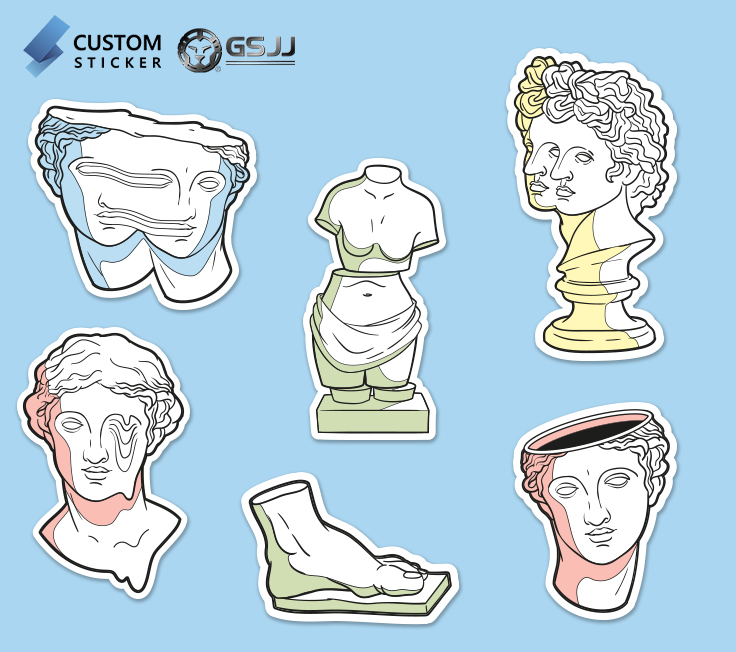
7. Try Something New
If you’re bored with your artwork or you’re feeling uninspired, try something new.
Use an art supply you’ve never used before. For example, if you’re an acrylic painter but only a watercolour beginner, practice your watercolour skills.
Alternatively, you could try a whole new art medium.
For example, if you’re a traditional artist who has never tried digital art, explore it. Or if you’re a graphite portrait artist, experiment gouache and watercolours.
Even if you’re not super thrilled with the new supply or medium, you’ve expanded your artistic horizons and gained new knowledge.
Even better, you may realize that you love that new supply or medium!
Related: Check out this complete beginner’s guide if you’re interested in learning to paint with watercolour.
8. Compete in an Art Challenge
A good way to push yourself out of your creative comfort zone is by doing something new that you haven’t attempted before.
If you’ve never competed in an art challenge, give it a try!
There are so many art challenges out there, like using a limited colour palette, doing a 30 day challenge, or trying a “draw this in X style” challenge. You could even up the ante by creating artwork with your non-dominant hand!
As well, you could check out famous art challenges like Inktober and Mermay that take place in October and May respectively.
Even if it’s not currently the right month, you can look at the challenge prompts from previous years and use those lists to inspire your own personal challenge.
9. Recreate Your Old Artwork
This method is great because it can give you the incentive to stick to a regular creative schedule. If you lack structure in your creative process, this method could work well for you!
When your creativity is stagnating, you can take a look back at what you’ve already created. This is a great way to find artistic inspiration and cure your art block.
By redrawing or repainting an old artwork, you’ll be able to see improvement in your technique and skills.
Seeing the improvement might inspire you with new ideas and spark your creativity.
And even if you don’t see much improvement, then think about the ways in which you would improve your old artwork, and then give it a try.
10. Just Do It
I can’t emphasize this enough:
Just do it.
Sometimes we just have to face our problems head on. Sure, it might suck at first because no one wants to do something they don’t want to do. But if the result is overcoming art block, isn’t it worth the try?
For example, you can learn how to set goals to give you motivation and help you achieve your creative projects and ambitions.
But if you just pick up the pencil or paintbrush, you might discover that the hardest part was getting started.
Once that’s done, it gets easier.
Not every artwork needs to be a masterpiece. Keep a sketchbook for doodles, sketches, and thumbnails and don’t expect perfection. Take the pressure off yourself and just create.
Related: If you struggle with perfectionism, check out how to stop being a perfectionist as an artist.
11. Use a Colour App
This is a simple yet effective way to kick start your creative engine.
Use a colour app such as Coolers to come up with unique and appealing combinations. Experiment with earth tones, monochrome values, pastels, analogous colours, and more!
You may find that by playing around with colour combinations, you become inspired to create an artwork based off of the palette that you are working with.
As well, you can make colour swatches with your paints, markers, and pencils. While you experiment, you’ll be learning more about colour theory.
Consulting colour wheels, palettes, and charts can help spark your creativity!
Experiment with colour combos, shades, and hues to inspire you.
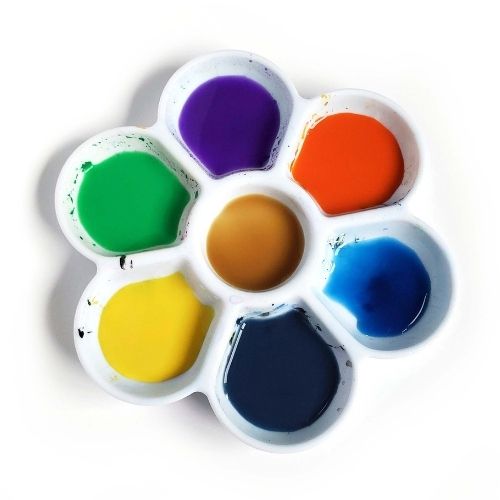
12. Get Out of Your Head
Sometimes, artists can get caught up in a negative head space when they aren’t feeling good or talented enough, or when the comparing game gets bad.
When this happens, remember the following quote:
Comparison is the thief of joy.
Quit scrolling for hours on Instagram or worrying about how many Instagram followers you have. Better yet, just step away from all the picture-perfect artwork and creative projects.
Chances are, you might be consuming too much media that is putting you in a negative mindset.
We’ve all been there, am I right?
Change your mindset by reflecting on your artistic accomplishments. Remind yourself of all the artwork you’ve already created, and feel grateful for all the things you’ve learned on your artistic journey.
Related: Check out these positive daily art affirmations to boost your self-esteem as an artist.
13. Re-Evaluate Your Environment
Have you looked around at your environment lately?
Do it right now. Or when you get home.
Is your environment messy? If so, cleaning it may lift your spirits.
Is your environment stressful? Having a distracting TV or loud family members could be stressing you out and preventing you from creating.
Whatever the case, take a minute to evaluate your environment and decide for yourself whether you want to keep creating in that space.
If the answer is no, find somewhere new that is more conducive.
If your environment is fine, then think of new ways to spruce up your space. Maybe you can put inspirational quotes or pictures around your workspace. Or add little trinkets that make you feel happy.
All in all, make sure your creative space is positive and stress free.
14. Prioritize Your Health
Your mental and physical health are extremely important. If you are in poor health, it’ll affect every other aspect of your life, oftentimes in negative ways. As a result, it could be contributing to your art block.
Your body might be stressed to its limits. Your mind might be very anxious. Perhaps you’re overwhelmed or burnt out.
So, if you’re not running at 100% capacity, it’s time to incorporate self-care ideas for artists into your life. Here is a list of ideas to help you relax:
- Drink a cup of coffee or tea
- Talk a walk outside
- Find a quiet space to read
- Take a relaxing nap
- Do some light gardening
- Cook your favourite meal
- Step away from social media
- Spend time with loved ones
- Watch a comedy show
- Get some exercise or practice yoga
15. Step Into Nature
Speaking of environment, lets talk about nature.
There’s nothing more natural than the Earth. If you need to take a break to help you deal with your creative rut, go for a walk in your neighbourhood. If possible, take the day off to explore your town.
The exercise and fresh air will be good for your mind and body.
If you’re not too shy, you can bring a sketchbook with you when you go to the park or a café. Observe your surroundings and make doodles or thumbnails of the things you see.
When you get home, you might be inspired by what you saw.
If you see anything particularly interesting, snap a photo of it and use it as reference later on.
When you’re feeling more energized and restored, return to your artwork. You’ll probably find that it’s easier to concentrate or feel inspired when your mind and body are feeling good.
And if your mental and physical health are already good, practice self-care anyway so that you maintain your equilibrium.
Related: Learn how to draw and sketch various objects from nature by checking out these fun sketching tutorials.
Conclusion
Bottom line?
There are tons of different strategies to help you overcome art block. Now that you have good understanding of 15 ways you can cure art block, it’s time to practice these healthy art habits.
Just remember this:
It’s perfectly normal for artists to experience art block. So when it happens to you, be patient with yourself.
Practice some of the strategies you’ve learned today, and I’m sure you’ll be able to get out of your creative rut in no time.
You can do it! I believe in you!
Have you ever struggled with art block? How did you manage to overcome it? Share your strategy in the comments below!
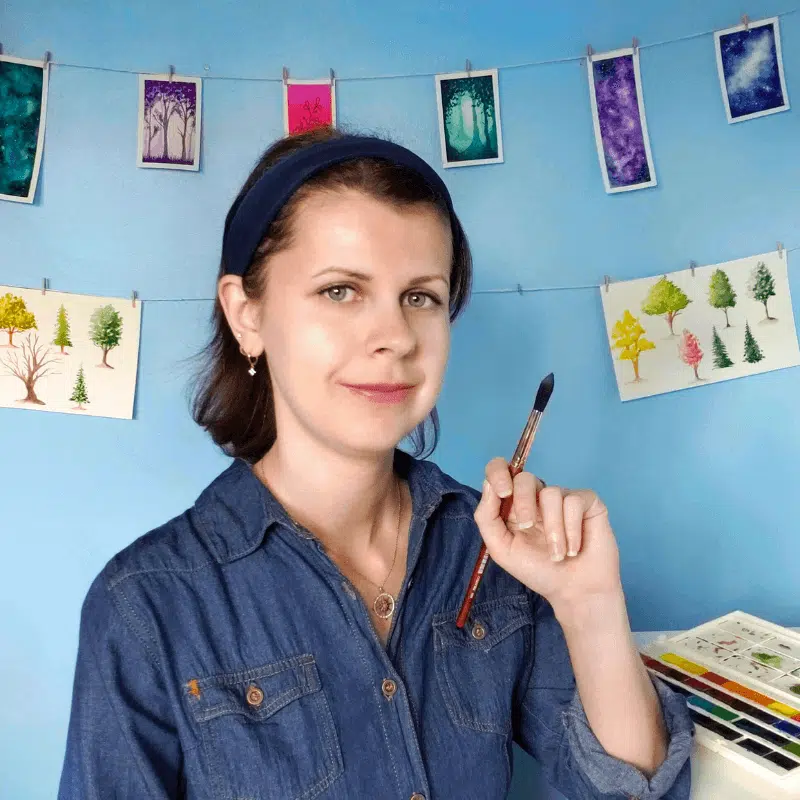
Miranda Balogh
Artist & Online Educator

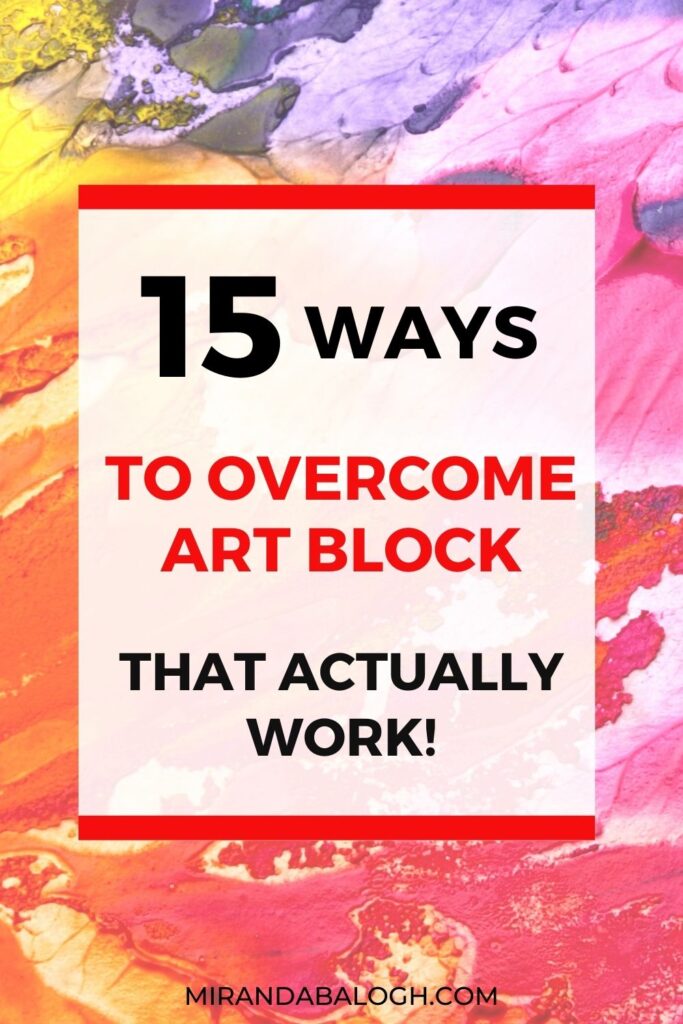
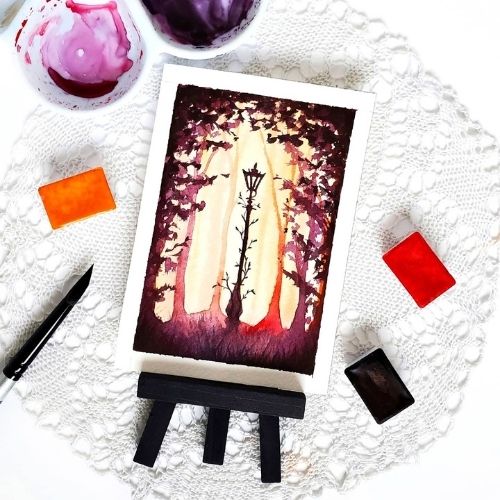
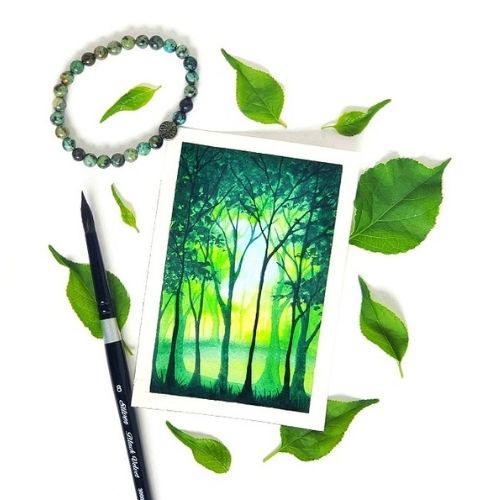
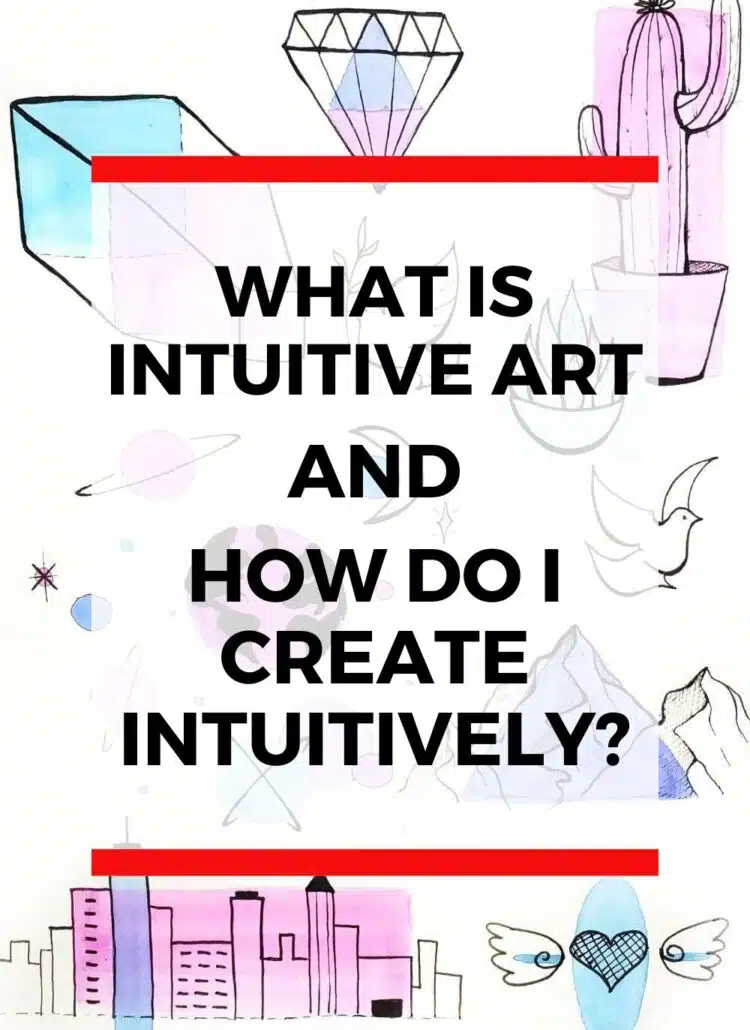
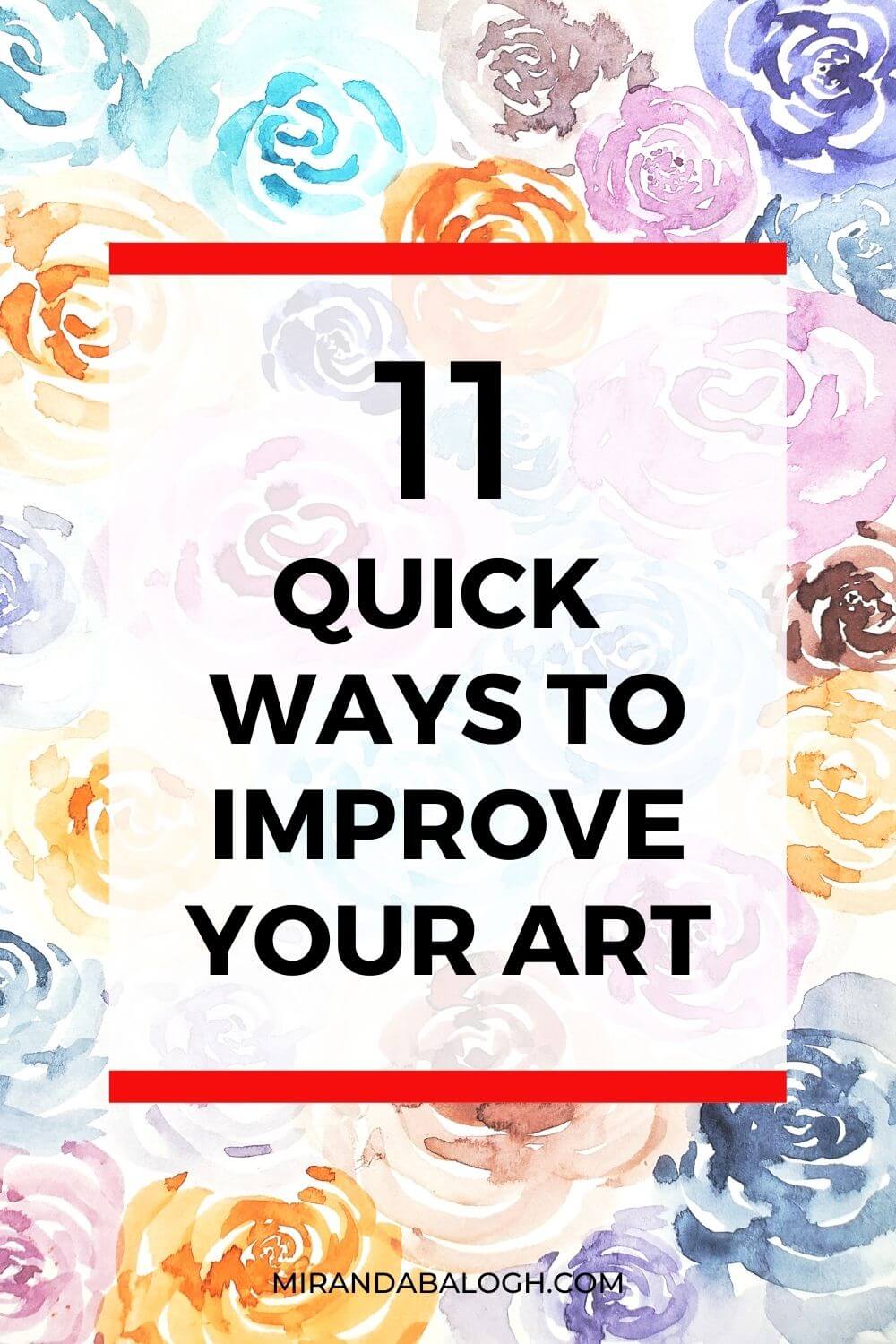
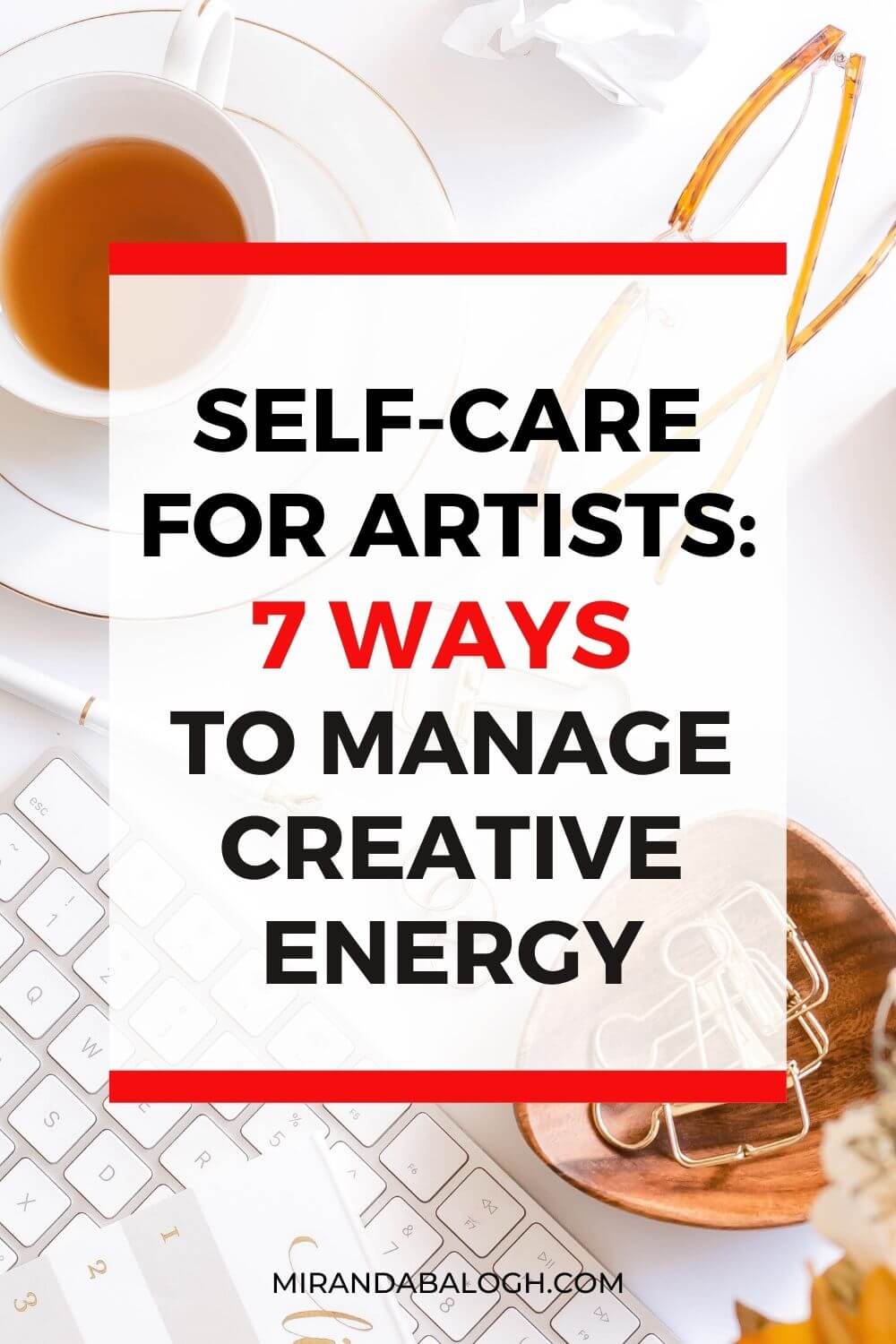
Hello Miranda!
First of all, congratulations on launching such a wonderful blog site for artists. This is such a very definite and informative reading for us artists struggling with Art Block occasionally. I hope many more people would be able to read this! ❤️ Looking forward to more great content that you will be sharing with us. ☺️
Thank you so much for your support! I really appreciate it. 🤗
I’m glad that you enjoyed this article! It’s my goal to teach, support, and inspire as many artists and creatives as possible.
Again, thanks for the positive feedback. That really means a lot 💜
I always slip into a art block. These tips are really great!! Thanks for sharing!
At least you now know how to effectively get rid of art block the next time it happens. Thank you for sharing!
Normally I would not respond to one of these…….but this is “what the doctor ordered”
I’ve been in a “Art block” for a while now and this has pointed me in the right direction so I had to say it here if for nothing else to acknowledge it and do something about it! and say thank you!
Thanks for the lovely comment! I’m glad this article was able to help you figure out how to overcome art block.
I’ve been in a art block for about two days and this helped so much. ( also you should add mythical creatures on there )
I’m glad to hear that this article has helped you overcome art block! And thanks for the recommendation; I’ll think about adding it to the drawing ideas list.
Hello Miranda!
This post helped me out so much with my essay! Do you happen to remember the date you published this post? This is so I could credit you correctly on my Works Cited page. Thank You!
Hi Hayley! I published that blog post on 08/08/2020. I’m glad you found it helpful!
Hey Miranda,
I also slipt in kind of a art Block, but with a reason. I have a agressive sarcoma in my chest and got a daly threatment of radiotherapy for 6 weeks.
In that period I was often to tired to paint.
We then threatment was finished, i fell into a small art block.
Thank god this block was only for a week and a half, and then i found my inspiration back.
And now i’m painting again.
Painting is so relaxing for my and also a very good painkiller. If you’re focust, you don’t think of your pain that mutch.
So thank you for your wunderfull blog!
Regards,
Frits Keulers
From the Netherlands. 👍💖
Thank you for your kind words! I hope the treatment is going well and that you’re feeling better. Painting with watercolours is relaxing and therapeutic, so I hope it helps you as you recover. Wishing you a speedy recovery!
This was exactly what I needed to read. I knew I was in a rut and determined it was due to the stresses of the pandemic. Isolation from the artworld took it’s toll. Thank you so very much for these fabulous words of wisdom.
Thanks! I’m glad you found value and wisdom in this article.
ould just take a break – I am currently experiencing a painting block. Every time I pick up a brush lately – nothing! Today I experimented with color iy thanks for these tips!n the form of water color flower – eh! So… I truly appreciated your suggestions and the idea that I should take a real – WITHOUT JUDGEMENT!!!! So many thanks for these tips.
Thank you for your kind message! I’m glad these tips helped you create art more easily and without self-judgement.
i’ve had artblock for over a year and every time i try and draw it makes me want to cry because i keep comparing myself to those who are better than me and i never like what i draw no matter how many times i pull myself to try to. it honestly sucks
Hi Finn! I’m sorry to hear that you’re struggling with art block and comparison. I’ve been in your shoes, so I know how hard it can be to make art when you feel down. The best advice I can give you is to take a break from comparing yourself to other artists. For example, stay off of social media or don’t surround yourself with people who play the comparison game. Be gentle with yourself and have self-compassion. It’s important to remember that no matter what you create, you are worthy and you are enough. I’m confident that this is just a phase and that you’ll reignite your creative spark soon enough. You got this!